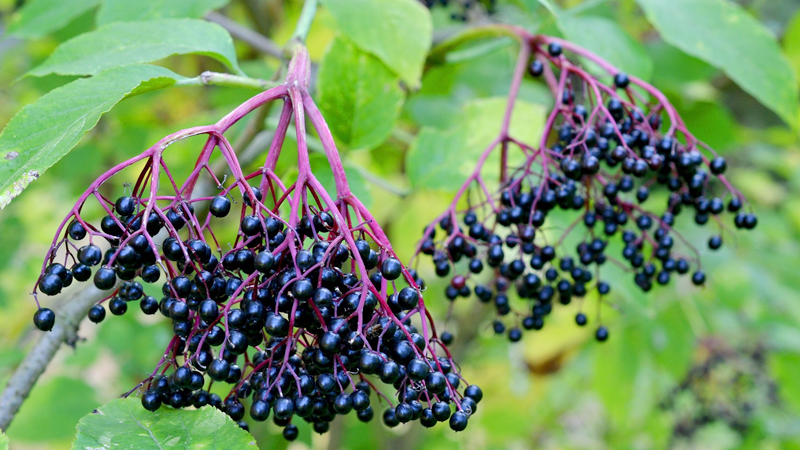Elderberries are delicious, contain important nutrients

By EILEEN W. NOVOTNY
OSU Ext. master gardener volunteer
CANFIELD
As I travel our local two-lane roads this time of year, I notice large, creamy white heads of flowers on tall vigorous shrubs growing along the ditches and roadside.
I have been eagerly watching for them knowing that when pollinated these flowers will produce a crop of berries containing dark purple juice which in turn can be used to produce that heavenly summer culinary delight elderberry pie.
Before there were child-labor laws, my siblings and I were given the task of “shelling” the elderberries my mother brought home after a picking foray. The bonus was using the de-fruited stems in the sand box as trees in our imaginary landscapes.
According to the United States Department of Agriculture, elderberries are great for us. They are packed with nutrients including minerals such as iron, potassium, phosphorus and copper, as well as vitamins, such as vitamin A, B and C, as well as proteins and dietary fiber.
Add some of the beneficial compounds that function as anti-inflammatory and antioxidant agents in the body and you have one powerful berry.
What has me excited is the news there are now several improved domestic cultivars available which might be hard to find due to rather limited demand but are worth the effort. Check out your favorite local nursery next spring.
Elderberries can be grown in cold-winter regions, down to USDA hardiness zones 3 or 4, tolerating winter temperatures as cold as minus 35 degrees.
Suggested cold hardy cultivars for our area are Adams No. 1 & No. 2; Black Lace, Black beauty, Nova, and York. These cultivars have large fruit compared to native plants and their foliage will be a pleasing addition to your landscape.
You can check out some native and cultivated varieties blooming at the OSU Extension Office in Canfield for the next week or so.
The plants prefer sunny locations, soil that is high in organic matter, a soil pH of 5.5 to 6.5, mulch that will suppress weeds and retain soil moisture and a yearly application of nitrogen after the first year.
Elderberry plants will supply shade protection, a place for butterflies to visit and make a great border or privacy hedge as they can grow up to 8 feet tall.
Two or more varieties of elderberries are required for pollination as a single plant is almost entirely self-unfruitful. According to the University of Vermont, the leaves, stems and unripe berries contain small amounts of hydrocyanic acid, which our bodies convert into cyanide. So, it is important to clean out unripe berries, green berries and stems.
If you are uncertain about the level of ripeness, simply cook, cool process or ferment the berries to neutralize the compounds.
This plant is hearty enough for even first-time growers to master. I highly recommend giving elderberries a chance.
I just hope that I can cajole my grandchildren into helping me shell my crop. Maybe a piece of pie would work as a bribe.
To learn more about elderberries, go to http://go.osu.edu/elderberries.
 43
43
